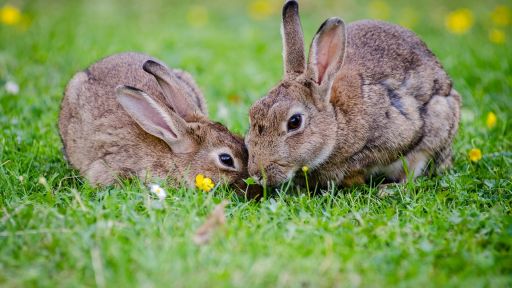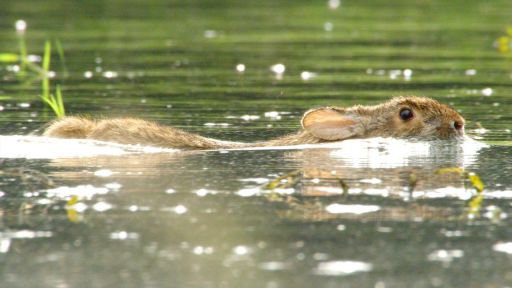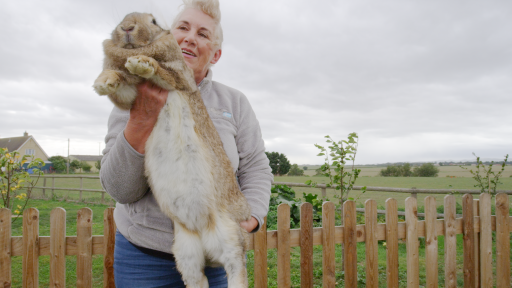There are more than 100 types of rabbits and hares, both domestic and wild, from swamp rabbits to Flemish giants to snowshoe hares. Yet these prolific creatures are often overlooked and rarely get the respect they deserve – due, in part, to their adorable appearance and storybook depictions. Learn how hares are more than just a rabbit of longer ears and legs, how rabbits have managed to survive in ever-changing landscapes – from downtown Chicago to Canada’s frozen boreal forest – and how they turn the tables on their predators. Meet rabbit enthusiasts who convene to determine the “Best in Show,” and join scientists in the field as they work tirelessly to save rabbit species from the brink of extinction and reveal ground-breaking discoveries. Explore how surprising and remarkable rabbits and hares can be as they face incredible challenges in the wild, from habitat loss to climate change.
Buzzworthy Moments:
- Once a year, rabbits from all over North America and as far as Japan come together to compete in the American Rabbit Breeders Association (ARBA) rabbit show. More than 3,000 people and 17,000 rabbits come to the show to compete. Forty-nine breeds, including the French lop, Tan rabbit and English Angora, compete for the coveted prize of “Best in Show.”
- A male Eastern cottontail runs fast toward a female cottontail in an attempt to communicate his desire to mate. She jumps straight up in the air as he runs beneath her. To further entice her, the male gives her a spritz of urine as he passes. If she is interested, her jump steps become faster and her leaps get higher. The longer the dance goes on, the closer the female is to mating. This ritual is called cavorting.
- The disappearance of dense shrublands in the Northeast has had a drastic effect on the New England cottontail. To remedy this, biologists at the Roger Williams Park Zoo and the Queens Zoo have raised around 150 New England cottontails over the course of six years through a process called captive breeding. When the cottontails reach a certain age, they are then released back into the wild, where they must learn how to find food and evade predators within the first few hours of life in their new home.
- A hawk spots an Antelope jackrabbit and begins chasing it throughout the desert. The hare is built for speed, but Harris hawks hunt in packs. As the hare escapes one hawk, two more hawks keep pursuing the hare as it tries to escape. Sensing the trap, the hare dives undercover, hoping to wait out its predators. The hawk rushes the hare, forcing it back out into the open, where the other hawks are waiting to attack.
Noteworthy Facts:
- The Antelope jackrabbit is the largest hare in North America, weighing more than nine pounds and standing almost two feet high.
- Rabbits are born in nests, hairless and helpless, with their eyes and ears closed. Hares, meanwhile, are born on the ground with a full coat of fur and their eyes wide open. Hares are ready to run an hour after being born, while rabbits still depend on their mothers for the first two weeks.
- When outnumbered by predators in their environment, a Snowshoe hare reacts to this chronic stress by reducing its fertility. Hares usually give birth to around 20 babies per year but can limit their reproduction to 7-8 babies per year when threatened— just enough to sustain their population’s long-term survival and starve out their predators.
- Swamp rabbits are the largest rabbits in the cottontail family. Their large size gives them increased buoyancy and musculature to be great swimmers. They are so comfortable in the water that they easily move about flood plains and swamps to evade predators and find food and mates. These shy, little-known creatures have been filmed for the first time in Remarkable Rabbits.



